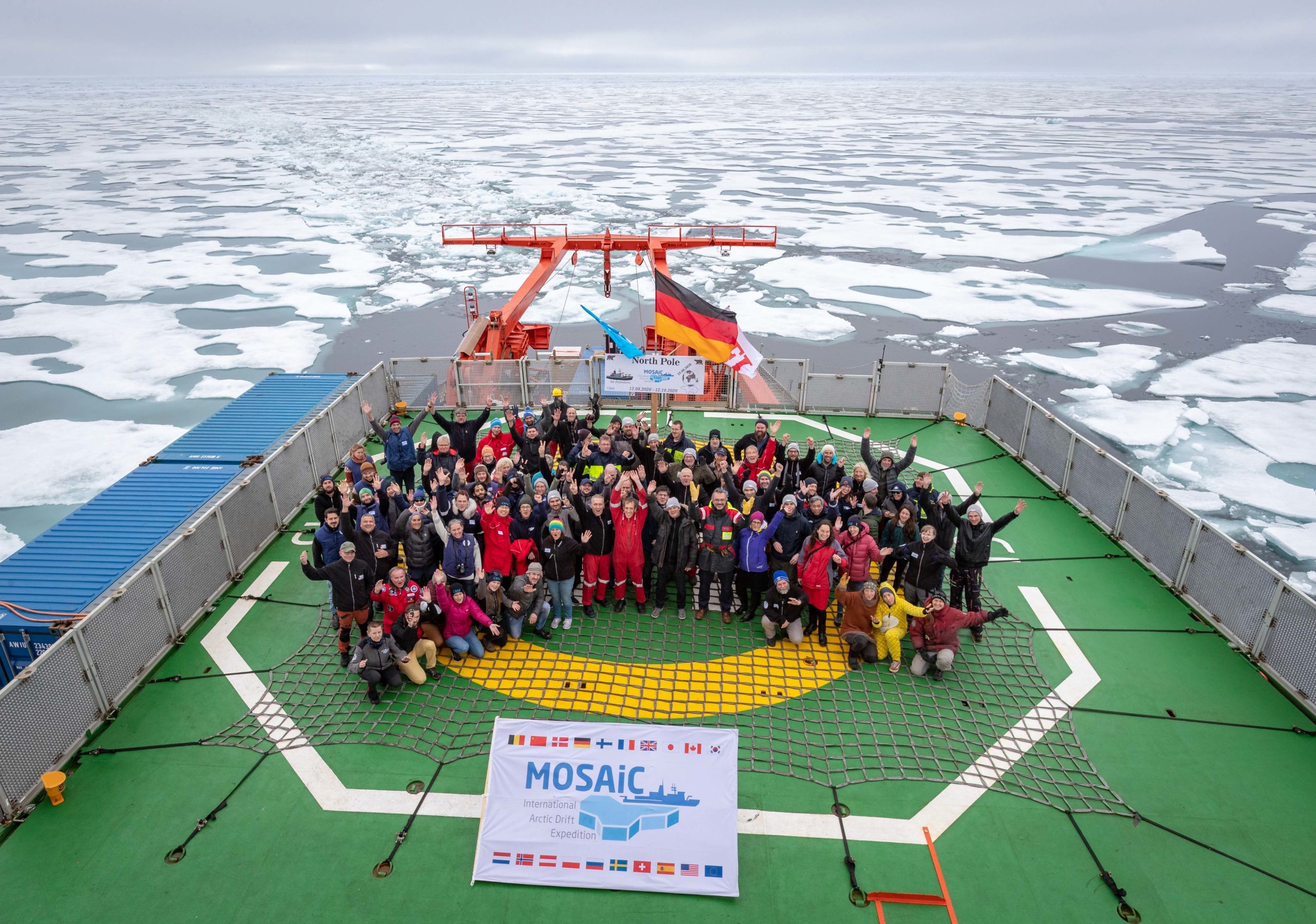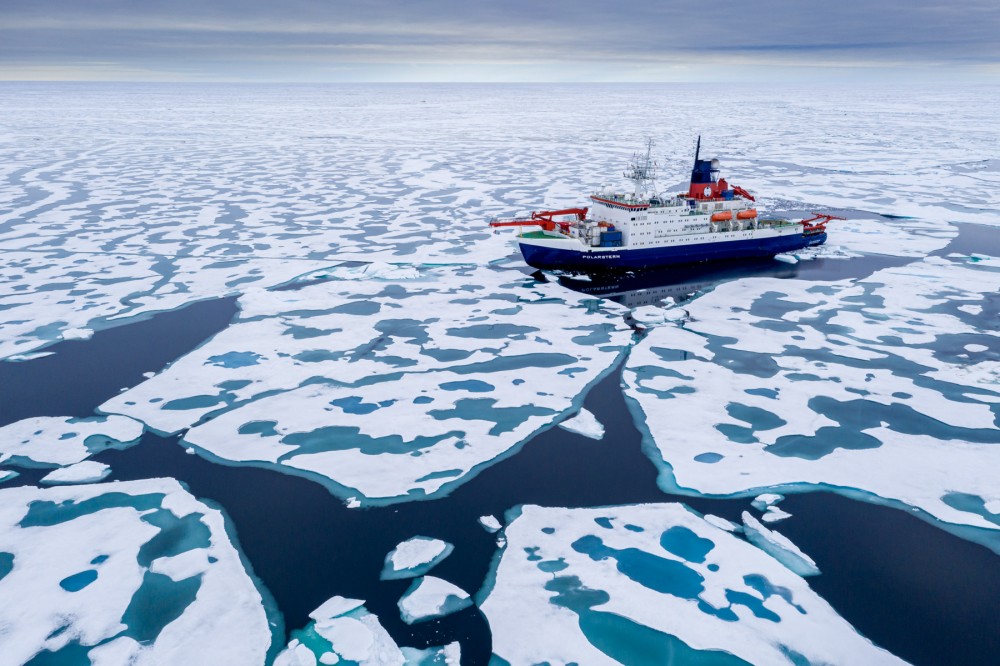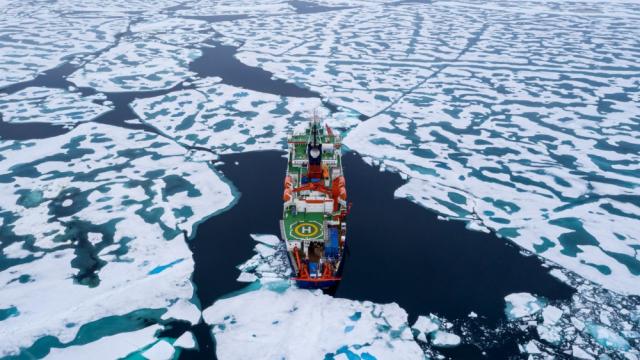At Gizmodo, we’ve been following the historic extent of ice melt in the Arctic this summer pretty closely. But not as closely as Gunnar Spreen and his research team, who are literally following the ice.
“We’re attached to an ice floe now,” he said on the phone from a research vessel called the Polarstern, which is currently at the latitude 88 degrees north, just under 230 kilometres from the North Pole. “We’re drifting with the ice. Wherever it goes, we go.”
Spreen, a sea ice and remote sensing scientist at the University of Bremen, is taking part in a research expedition known as the Multidisciplinary drifting Observatory for the Study of Arctic Climate, or MOSAiC. It’s the largest Arctic research campaign in history, with some 500 scientists and staffers rotating on and off of the research vessel for months at a time.
The current cohort boarded the Polarstern on August 12, and in just a week’s time, they made it to the North Pole. To get there, they took an unexpected route, north of Greenland.
“We went north when we normally would have gone east. We never would have expected to go north there, because usually there is quite thick ice in that region, so it would have had to be avoided by ships,” he said. “But this year, there was very low ice concentration. We saw on satellites that there was a lot of open water we could go through.”
Those aboard the Polarstern are encountering some blocks of ice, but they are so brittle that the vessel’s icebreaker is easily able to clear them, making way to pass through.

It’s normal to have some amount of open water between ice floes in the Arctic in the summer. Generally, though it expands and freezes to cover nearly the entire ocean in the wintertime, during the warmer parts of the year, quite a bit of it melts.
But there should not nearly be as much open water as there is right now. In the summer, ice now covers just half the area it did in the 1980s, and has become younger and far thinner, too. All told, the Arctic has lost 75 per cent of its volume of ice in the past 30 years.
Up near the North Pole, this is all creating breathtaking scenes. The vast, deep blue ocean is covered in splintering white ice floes. Those floes are spotted with melt ponds, or shallow pools of water form which form on their surface and reflect the bright turquoise sky.
“It’s actually quite beautiful,” said Spreen.
But that beauty is undermined by the haunting knowledge that scientists are witnessing the death of summer Arctic ice. The region is warming more than twice as fast as the rest of the planet, a fact illustrated by the recent record-setting heat waves and fires in Siberia. Last month, the researchers found that the extent of sea ice in the Arctic reached a record low, shrinking to levels that have not been seen since scientists began observing the area in the 1970s. Next month, that ice extent is projected to be even lower as its reaches its annual minimum.

As the world continues to warm amid the ever-worsening climate crisis, a growing body of research shows we could see ice-free summers in the Arctic as soon as 2035. The MOSAiC scientists’ recent observations make that seem more like an unavoidable fact than a remote possibility.
That would be devastating to the animals, including seals and polar bears, that rely on Arctic sea ice to survive. Indigenous communities also rely on this ice, too, because during the winter and spring, it acts as a bridge to bring them together and lets them to continue historic cultural practices such as seal hunting and dogsledding.
Spreen and his teammates will spend the next month in the Polarstern following one ice floe, conducting a variety of experiments and scientific measurements in order to improve scientific climate models of the Arctic to gauge those consequences in intimate detail.
Those of us far from the Arctic should be frightened, too. Changes in the extent of sea ice can wreak havoc on oceans’ circulation, leading to widespread changes in the global climate. Disappearing ice can also alter weather patterns further south where most of humanity lives.
There’s still much about the effects of melting Arctic sea ice on the climate that scientists are learning about on the fly, and Spreen and his colleagues are hoping to contribute to that growing knowledge. But as the scientists’ observations from the Polarstern show, there’s no uncertainty that the region is rapidly getting warmer.
“It’s very, very clear that there are big changes happening in the Arctic due to climate change,” said Spreen. “To anyone watching the journey, I hope they can see how clear that is.”
